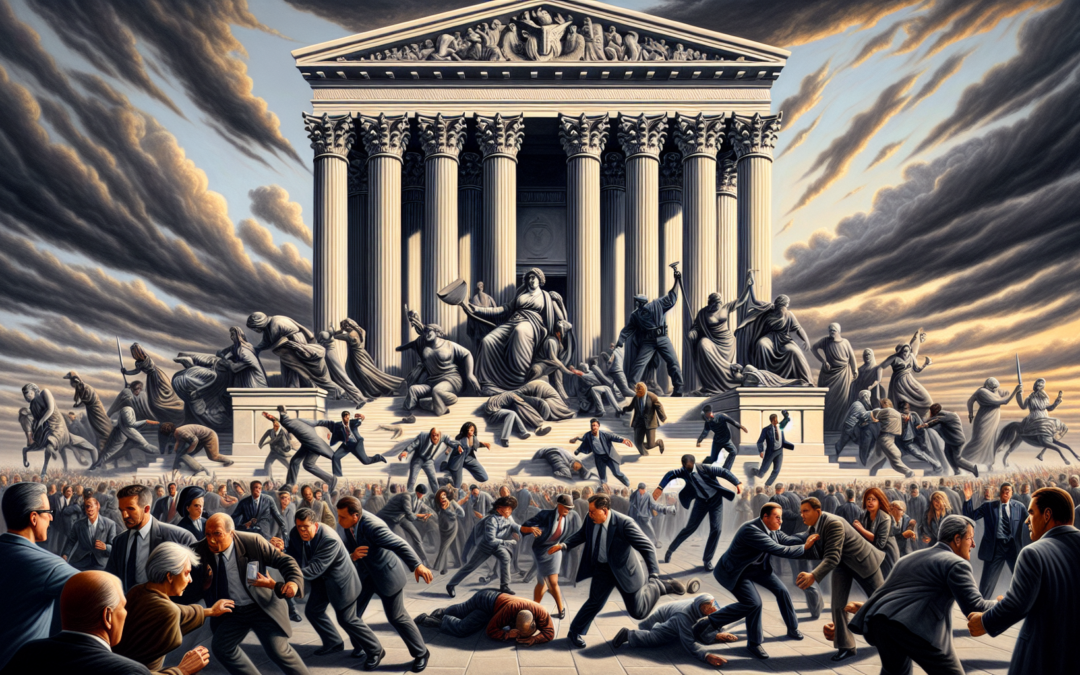When Cameras Confront Badges: Navigating Civil Liberties and Security Risks in Unprecedented Times
In recent years, the rise of so-called First Amendment auditors has caught law enforcement’s attention. These individuals enter public spaces, chiefly courthouses and law enforcement establishments, armed with cameras and audacity, with an intent to challenge what they perceive as excessive governmental power. They claim their activities promote accountability and transparency but often engender tension, thus spotlighting crucial questions concerning the delicate balance between personal freedoms and public safety.
From behind the badge, the challenge faced by law enforcement officers during such encounters is immense—striking a precarious balance between upholding the law while respecting individual liberties. The very nature of their task is filled with paradoxes. Officers must differentiate genuine threats to security from mere provocations aimed at eliciting a reaction. Each encounter becomes part performance, part reactionary judgment call with implications that can ripple through community relations like shockwaves.
The Training Dilemma
The training regime for law enforcement officers seldom includes modules labeled “First Amendment auditing.” Consequently, officers face a unique conundrum: how to interact with individuals who purposefully exploit the boundaries of legal and constitutional interpretation. These events often involve heated exchanges, where words become weapons, and defiance begets scrutiny.
Departments nation-wide are revisiting their training manuals, not just to include tactical regulations but to stress the critical ethos of patience, legal acumen, and resolve. This transformation marks a poignant realization: it is no longer enough to provide an arsenal geared towards physical confrontations. Officers require robust training on how to calmly and legally navigate nuanced situations involving free speech and videotaping to prevent potential unnecessary escalations.
This modification also echoes a broader recognition of the evolving nature of policing and the necessity to gradually transition toward models incorporating intellectual and emotional acuity alongside hardened experience.
Waking the Guardians: Aftermath and Reflection
Many law enforcement officers recount these interactions as pivotal, formative events. Though often simmering with anxiety, conflict, and hostility, they also present opportunities for reflection and refinement. The majority of officers, enshrined with a deep commitment to duty, yearn for progress in community collaboration and restorative public interactions.
In the stories shared among the force, a telling motif emerged: behind the cacophonous noise of challenges and biases lies a firm dedication to pursue justice, unbiased and with fidelity. Whether standing stoically or adopting defensive positioning, each officer carries an oath—a pledge to protect a nation that is diverse in her views and perceptions.
The aftermath of these encounters inaugurates an era of reflection, rekindling the original purpose of law enforcement: guardianship. As the daylight recedes and dusk approaches, bringing with it the echo of the day’s relentless occurrences, quiet contemplation is the mental soother. Vigilance internalizes, heightened not merely by these isolated instances but reinforced by the desire to learn and grow from them.
For more stories and insights about these challenges from the perspective of those who’ve worn the badge, follow John Ligato’s insights on his YouTube channel and watch his discussions. You can also engage deeper through his Facebook platform.
Building Bridges and Idealism
Against the backdrop of buzzy technicalities and principles glorified in activism, officers strive to transcend misconceptions and reiterate a simple truth: democracy does not fragment into binaries. Law enforcement is human, harboring flawed yet earnest endeavors. As the destructive veneer of confrontation wanes, the countervailing forces work earnestly to illuminate common ground—the stretches of shared associations expanded within our communities.
A profound encouragement rises from recognizing the nature of the task—a calling met not with fear or prejudice, but positivity aligned towards progress. Amplifying understanding and tactful patrols lies the visionary refinement that new generations of officers embrace, engaging with this unexpected era of public audacity maintaining an excruciating transformative ethos. These forward-looking endeavors promise to forge newfound bridges, cultivating solidarity and resolute optimism among the bravest and unswerving protectors of liberty.
Conclusion
As debates surged through public discourse, spontaneous to crafted anguished voices demand cautionary care. Beneath the clamor, the fundamental quality of unity gestures a plea—a resounding call for succor amid a cacophony of disparate moments. Law enforcement continues to evolve, like a river adapting to changes in its landscape while keeping to its noble path. Thus unfolds a dialogue conducive to ensuring that serenity, fortitude, and justice prevail—not as distant dreams clutched by a weary officer on a solitary dawn but as inseparable companions of the noble weight aknowledged to bear for the common good.
Let us respect those who step forward bravely into the fray, those who choose to wear the badge, swearing to uphold these freedoms with every breath sworn by their solemn oath. Amidst roads wrought, touched in courage’s clasp, walks a tapestry of culture woven deftly by law enforcement’s gallant threads; we embrace, forward-clinging, toward shared vows anew.

Recent Comments